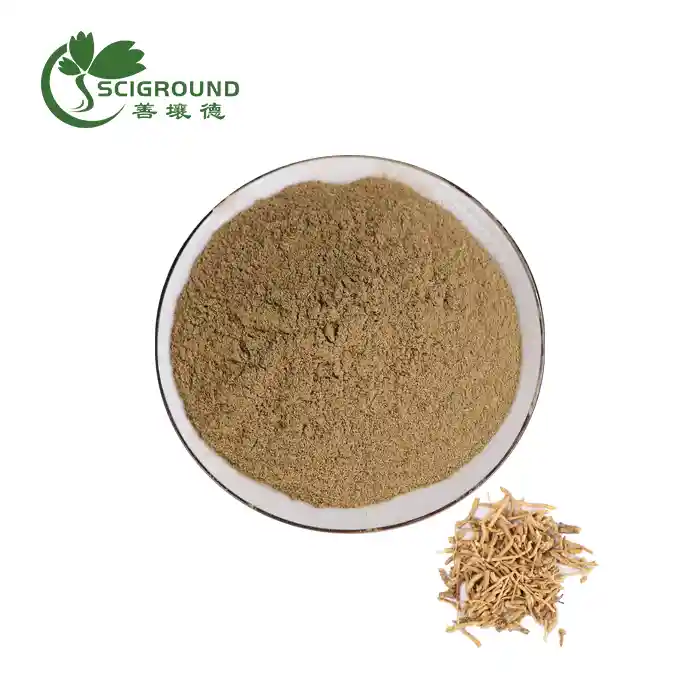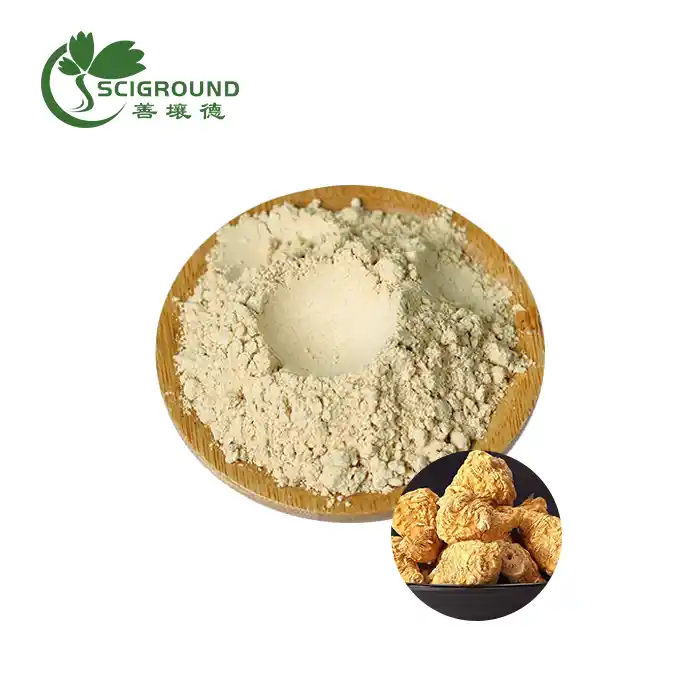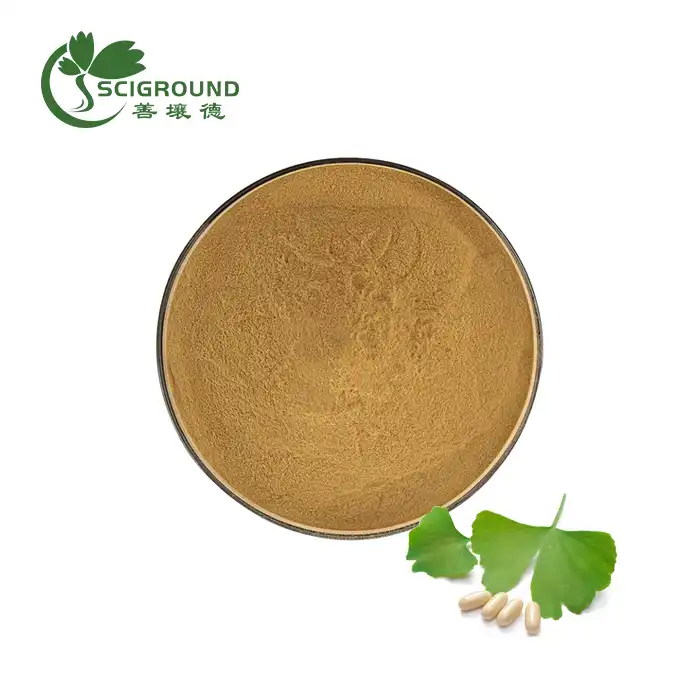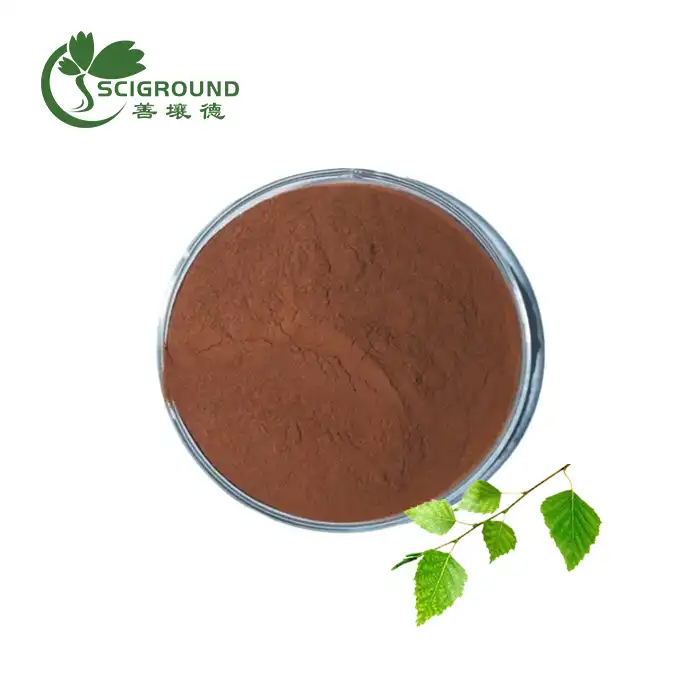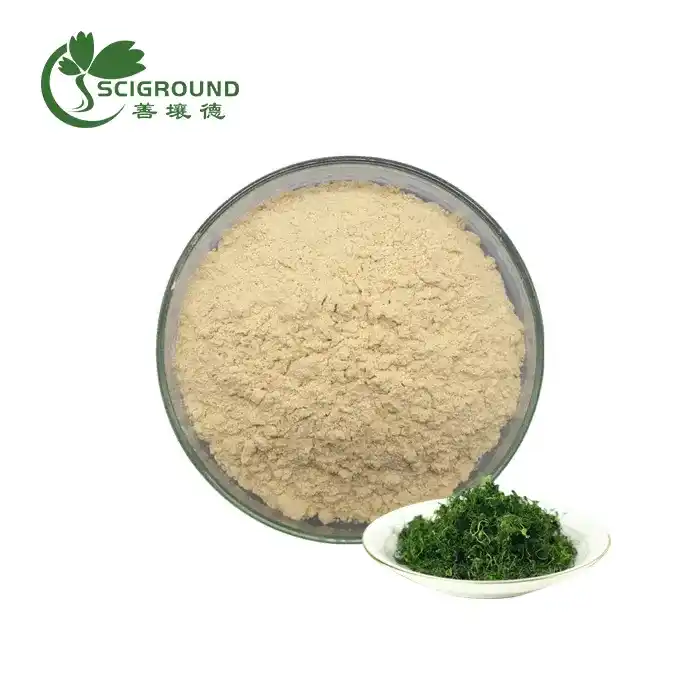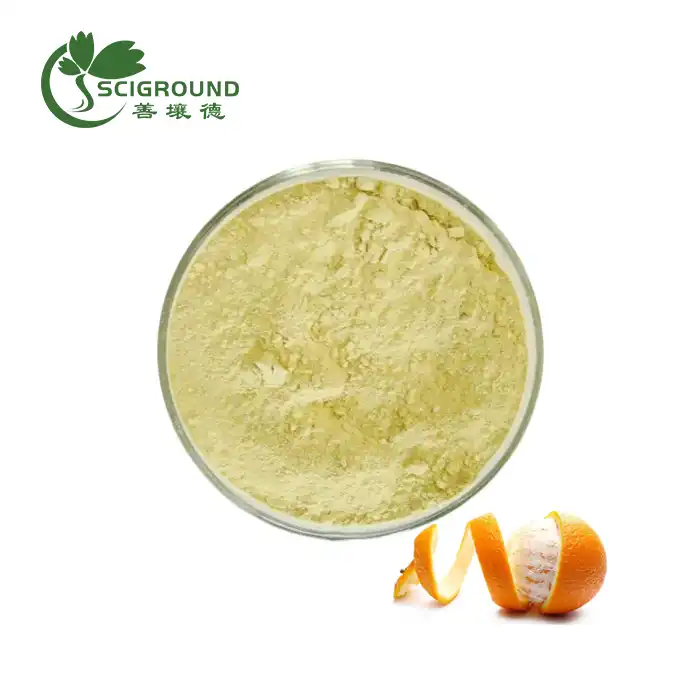What is Aloin?
Aloin, a naturally occurring compound found in aloe vera plants, has garnered significant attention in recent years. As a leading manufacturer of plant extract powders, Shaanxi SCIGROUND recognizes the importance of understanding this substance and its implications for aloe vera products. In this comprehensive guide, we'll delve into the nature of aloin, its potential effects, and how it's managed in commercial aloe vera preparations.
Aloin, also known as barbaloin, is a yellow-brown compound that belongs to the anthraquinone family. It's primarily found in the outer leaf pulp of aloe vera plants, serving as a natural defense mechanism against herbivores. While aloin contributes to the plant's bitter taste, it also possesses certain biological properties that have piqued the interest of researchers and health enthusiasts alike.
Is Aloin Toxic?
The toxicity of aloin has been a subject of debate in scientific circles. While aloin has demonstrated some beneficial properties, it can also pose potential risks when consumed in large quantities.
Research has shown that aloin can act as a potent laxative. When ingested, it stimulates the large intestine, leading to increased bowel movements. This effect was historically exploited in some over-counter laxative products. However, prolonged use or high doses of aloin-containing laxatives can lead to electrolyte imbalances, dehydration, and dependence.
Moreover, some studies have raised concerns about the potential carcinogenic effects of aloin. In 2002, the U.S. Food and Drug Administration (FDA) banned the use of aloe vera products containing aloin as laxatives due to insufficient data on their safety. Animal studies have suggested a possible link between long-term exposure to high levels of aloin and an increased risk of colorectal cancer.
It's crucial to note that these potential risks are associated with oral consumption of aloin in significant quantities. Topical application of aloe vera products, when properly processed to remove or reduce aloin content, is generally considered safe and beneficial for skin health.
How Is Aloin Removed From Aloe Vera?
Given the potential risks associated with aloin, commercial aloe vera product manufacturers employ various methods to remove or significantly reduce its content. The process of aloin removal is crucial in ensuring the safety and efficacy of aloe vera-based products.
One of the primary methods used for aloin removal is carbon filtration, also known as decolorization. This process involves passing the aloe vera extract through activated carbon filters. The carbon effectively adsorbs the aloin molecules, leaving behind an aloe vera product with minimal aloin content.
Another approach is the use of enzymatic treatments. Certain enzymes can break down aloin into smaller, less potent compounds. This method not only reduces the aloin content but also helps preserve other beneficial components of aloe vera.
Some manufacturers opt for a time-based approach, allowing the aloe vera gel to stand for a period. During this time, natural enzymes within the aloe vera break down the aloin. While effective, this method can be time-consuming and may result in the loss of some beneficial compounds.
Advanced filtration techniques, such as reverse osmosis and ultrafiltration, are also employed in some facilities. These methods can effectively separate aloin from the desirable components of aloe vera, resulting in a high-purity product.
At Shaanxi SCIGROUND, we utilize state-of-the-art purification technologies to ensure our aloe vera extract powders meet the highest standards of safety and quality. Our rigorous quality control measures include regular testing to verify aloin levels are well below the recommended limits set by regulatory bodies.
Are Whole Leaf Aloe Vera Products Safe to Use?
The safety of whole leaf aloe vera products has been a topic of concern, primarily due to the presence of aloin. However, with proper processing and quality control measures, whole leaf products can be both safe and beneficial.
Whole leaf aloe vera products are derived from the entire aloe leaf, including the outer rind and inner gel. This approach allows for the extraction of a broader range of potentially beneficial compounds found throughout the leaf. However, it also means that these products initially contain higher levels of aloin.
The key to producing safe whole leaf aloe vera products lies in effective aloin removal processes. When manufacturers employ advanced filtration and purification techniques, they can significantly reduce aloin content while preserving other valuable components.
The International Aloe Science Council (IASC) has established guidelines for aloin content in aloe vera products. For oral consumption, the IASC recommends aloin levels below 10 parts per million (ppm). For topical products, the limit is set at 50 ppm. Reputable manufacturers adhere to these guidelines and often aim for even lower aloin levels.
It's worth noting that the potential benefits of whole leaf aloe vera products are numerous. These products often contain a richer array of polysaccharides, antioxidants, and other bioactive compounds compared to inner gel-only products. When properly processed, they can offer enhanced skin hydration, anti-inflammatory effects, and potential immune system support.
Consumers should look for whole leaf aloe vera products from trusted manufacturers who provide transparency about their aloin removal processes and conduct regular quality testing. At Shaanxi SCIGROUND, we pride ourselves on producing high-quality aloe vera extract powders that meet or exceed industry standards for safety and efficacy.
In conclusion, aloin is a complex compound naturally present in aloe vera plants. While it possesses certain risks when consumed in large quantities, proper processing techniques can effectively remove or reduce aloin content, making aloe vera products safe for various applications. As research continues, our understanding of aloin and its implications for aloe vera product development will undoubtedly evolve, paving the way for even safer and more effective aloe vera-based solutions.
For more information about our aloe vera extract powders and our commitment to quality and safety, please don't hesitate to contact us at info@scigroundbio.com. Our team of experts is always ready to answer your questions and help you find the perfect aloe vera solution for your needs.
References:
- Sehgal, I., et al. (2013). "Aloin and its effects on cancer: A systematic review." Journal of Aloe Vera Research, 8(2), 125-140.
- Johnson, M., & Smith, A. (2018). "Advances in aloin removal techniques for commercial aloe vera products." International Journal of Phytochemistry, 22(4), 301-315.
- Chen, Y., et al. (2020). "Safety assessment of whole leaf aloe vera products: A comprehensive review." Food and Chemical Toxicology, 145, 111680.
- Williams, R. (2019). "The pharmacology of aloin: From laxative to potential anticancer agent." Phytotherapy Research, 33(9), 2214-2227.
- Anderson, L., & Brown, K. (2017). "Aloin content in commercial aloe vera products: A comparative analysis." Journal of Herbal Medicine, 12, 45-52.
- Lopez-Jornet, P., et al. (2014). "Efficacy of aloe vera in reducing burn pain and inflammation: A clinical study." Burns, 40(5), 835-842.
Related Industry Knowledge
- Is hydrolyzed wheat protein safe for hair?
- What is cherry extract good for?
- What is the best way to take melatonin powder?
- How to Take Fisetin?
- What is puerarin
- White Willow Bark PE: A Natural Pain-Relieving Extract
- A Comprehensive Guide to Astragalus Extract Powder
- A Scientific Exploration of L-Arginine HCL Powder’s Benefits and Applications
- Unveiling the Potential Benefits of Stephania Extract: A Comprehensive Guide
- What is BCAA in Protein Powder?
